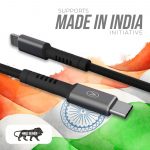Drive Growth and Loyalty With The Ultimate Guide to 360 Marketing Strategy
Synopsis
The noise around digital transformation has been nauseating without an iota.
Nonetheless, digital transformation is the only way forward for businesses to connect with consumers across touchpoints and engage with them to improve customer experiences for business growth. Ergo, reliance on digital marketing solutions is a foregone conclusion.
In 2024, nobody will ask what digital marketing is, right? However, this blog revolves around online marketing, a holistic approach to digital marketing, 360 marketing strategy, and the future of 360 marketing in the era of artificial intelligence and automation. In a nutshell, as a business, if you are looking for groundbreaking success through digital marketing, this blog is an Ultimate Guide to 360 marketing.
Introduction
If you have ever walked through Chinatown in New York, you would know how advertising banners hang around the shops, and shopkeepers pull dramatic acts to attract your eyeballs.
The digital world is no different today. Customers are blinded by the marketing blitz. Be it gaming apps, social media, education forums, or purely professional websites, brands penetrate consumers’ personal space at a neck-breaking speed for visibility, reach, and engagement.
Amid this crazy marketing scramble, brands can’t stand out and create ambiguity in customers’ minds. That’s where businesses need a 360 marketing strategy to blunt competition, grab customers’ attention, and enhance revenue bottom lines.
Understanding the Core of a 360 Marketing Strategy
Imagine you talk about buying a new pair of sneakers to your friend. Later, when you opened a cosmetics website, you saw a dynamic ad for sneakers. Then you switch to Instagram, and boom; your reel timeline contains sneakers ads. Then, you wanted to check some SEO videos, but you were shown the ads for sneakers right before the video.
That is it. A brand heard your intent and started engaging with you at every possible touch point, including your website, social media, email, and more on the web and mobile. You will find uniformity in all this messaging from a particular brand across the platforms. That’s a 360-marketing strategy.
360 marketing strategy consistently enhances customer journey across touchpoints and helps customers build a strong bond with the brand no matter which channel they are on, regardless of time and place. It is designed to give the target audience a complete brand experience.
Why is 360 Marketing essential?
360 marketing is not limited to campaigns; it includes essential elements, from a Facebook or Instagram ad to packaging and product quality. Consistency in messaging helps brands occupy consumers’ mental spaces and build trust among target audiences.
Every customer engagement through a 360 marketing campaign reinforces the brand ideology. For businesses, it is imperative to build a multi-channel and unified messaging mechanism to reach a wider audience, improve engagement ratio and conversion rate, and extract data for customer insight.
Key 360 marketing ComponentsUnderstanding Customers
Knowing customers’ likes, dislikes, preferred communication modes, and what they care about is a top priority for businesses.
Consistent Branding
Brands should ensure that the logo, typography, font, tone, and colors remain consistent across the marketing channels.
Unified Messaging
Customer engagement should reflect brand ideology, value proposition, and core message constant across touchpoints.
Seamless User Experience
Whichever channel the customer chooses to interact with the brand, the user experience should remain clean and coherent.
Multi-Channel Presence
A 360-marketing strategy means the brand remains proactive on all marketing channels, with a coordinated and relevant presence.
Customer-Centric Focus
Regardless of the channel, a brand must convey every message with customers at the center of its marketing campaigns.
Data Integration
Brands must leverage data and insights across the channels to enhance engagement and personalize customer experiences.
Metrix Tracking
Businesses must track every 360 marketing campaign to optimize them to improve conversion rates continuously.
Know Your Audience Like Never Before:Target Audience Research
To talk to someone, you need to know what they like and don’t like or what they need. Breaking eyes becomes easy when you have clues about an individual. Knowing the behavior of your target audience is critical to delivering a unified brand experience. In-depth consumer research helps businesses devise relevant and coherent 360-digital marketing services that translate fence-sitters into fans.
Demographic Dividend
Imagine you are making a pancake for your friend and adding mushrooms to it, but she doesn’t like mushrooms at all. Your 360 marketing strategy will fail if you do not know your target audience well. For brands, it is imperative to know what frustrates customers and what excites them, what their pain points are, and what genuinely resonates with them.
Although it is not tricky, businesses need to be precise in their marketing research exercises to learn the demography of the target audience along with their traits and behavior. Knowing their online preferences adds more value to your 360 marketing strategy.
Drawing a marketing strategy based on these insights would help the brand efficiently engage with customers with a personalized message to convert their desire into sales. Therefore, when it comes to 360-degree marketing solutions, shooting in the dark doesn’t deliver results.
Research Methodology
The core question is how to learn about customer behavior, likes, online preferences, and more. A few effective methods allow brands to penetrate prospective customers’ minds.
Surveys: Ask direct questions about the brand and products, similar products, ingredients, elegies, and more. Invoking emotions allows brands to get genuine answers.
Social Media: Prepare a checklist and explore social media to see what individuals of a particular demographic like, how they behave, what they buy, and so on.
Competitor Analysis: Sneak into your competitors’ marketing strategies and observe how they design their 360-degree marketing strategies to engage and convert browsers into buyers.
Original Source:https://techduffer.com/drive-growth-and-loyalty-with-the-ultimate-guide-to-360-marketing-strategy/







































































